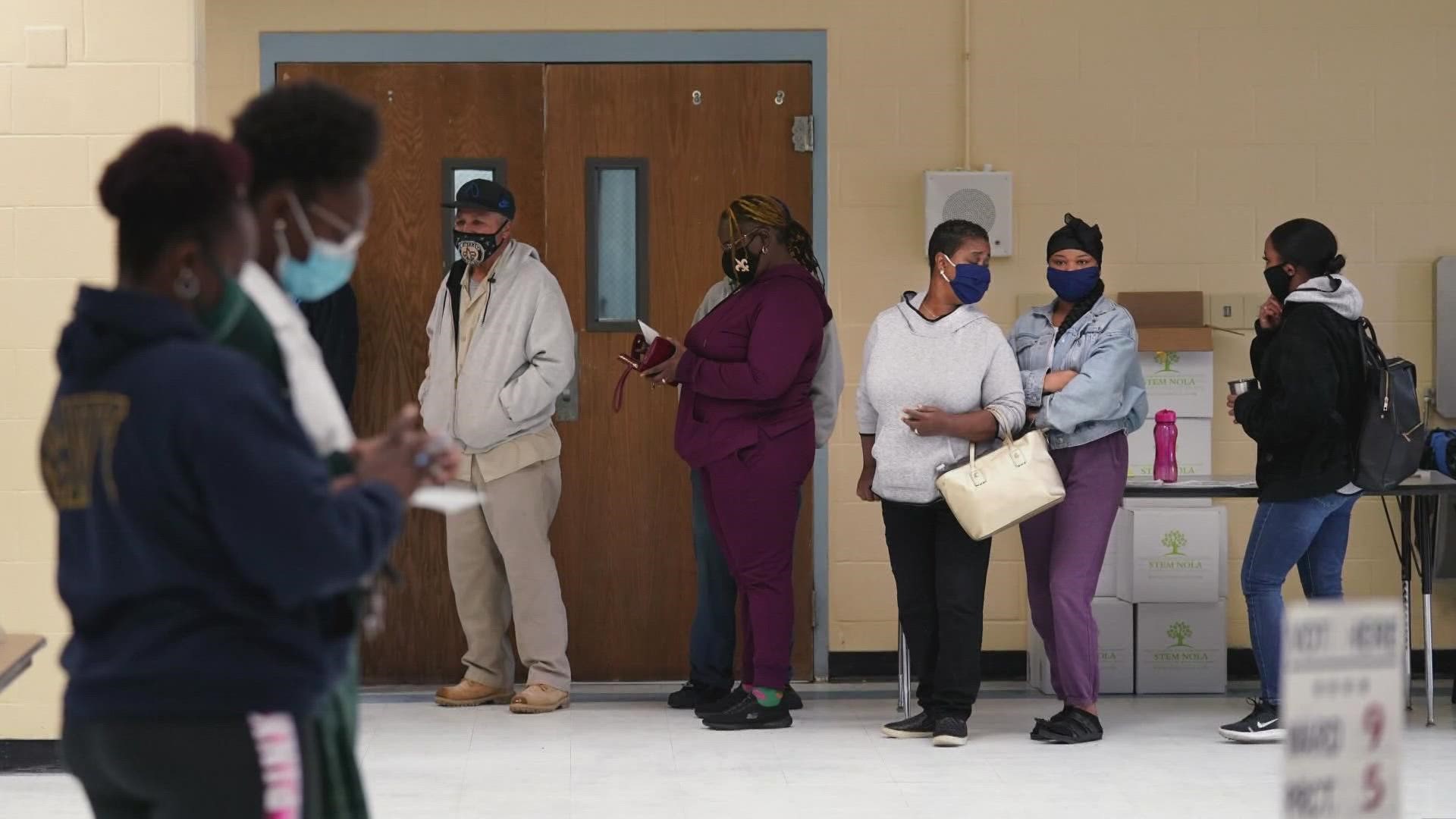NEW ORLEANS — The Supreme Court issued a surprising 5-4 ruling on Thursday in favor of Black voters in a congressional redistricting case, ordering a second district with a large Black population in Alabama. The ruling could also lead to far-reaching impacts on Louisiana's congressional map.
Chief Justice John Roberts and Justice Brett Kavanaugh joined with the court's liberals in affirming a lower-court ruling that found a likely violation of the Voting Rights Act in an Alabama congressional map with one majority Black seat out of seven congressional districts in a state where more than one in four residents are Black.
The case had been closely watched for its potential to weaken the landmark voting rights law, but also for its impact in other states. Louisiana's congressional map, also identified as probably discriminatory by a lower court, was allowed to remain in effect by the Supreme Court pending a decision on the Alabama case.
The current case stems from challenges to Alabama’s seven-district congressional map, which included one district in which Black voters form a large enough majority that they have the power to elect their preferred candidate. The challengers said that one district is not enough, pointing out that overall, Alabama’s population is more than 25% Black.
In Louisiana, there is only one majority Black district out of six, though the state's Black population is 33% according to the US census.
Partisan politics underlies the case. Republicans who dominate elective office in Alabama have been resistant to creating a second district with a Democratic-leaning Black majority, or close to one, that could send another Democrat to Congress.
The judges found that Alabama concentrated Black voters in one district, while spreading them out among the others to make it impossible for them to elect a candidate of their choice.
Louisiana's Redistricting Battle
Every 10 years, state lawmakers — armed with new U.S. Census Bureau information — redraw political boundaries for seats in the U.S. House, state Senate, state House, Board of Elementary and Secondary Education and the Public Service Commission. The process ultimately affects which political parties, viewpoints and people control the government bodies that write laws, set utility rates and create public school policies.
The latest redistricting process in Louisiana was a tense political tug-of-war, with the Republican-dominated legislature and Gov. John Bel Edwards fighting over the boundaries when lawmakers approved a congressional map with white majorities in five of six districts.
“There is absolutely no reason for Black voters to be packed into a single congressional district,” Jared Evans, a voting rights attorney with the NAACP Legal Defense Fund said.
Seven different alternative maps were presented in the special legislative session. Evans said two majority-minority districts should be drawn: one in the New Orleans area and a second stretching from Baton Rouge to Monroe.
“Baton Rouge and New Orleans are two distinct cities with two distinct districts,” Evans said. “Two distinct cultures and two distinct needs. Our position to the legislature and the court has always been from the beginning that New Orleans and Baton Rouge should be split up. District 2 should continue to be anchored by New Orleans and the surrounding communities. The minority population in the northern part of the state in Monroe and Alexandria and the River parishes is sufficiently large and geographically compact to constitute a majority along with Baton Rouge and another district which would be District 5.”
The governor vetoed the map. However, the legislature overrode the veto — marking the first time in nearly three decades that lawmakers refused to accept a governor’s refusal of a bill they had passed.
Along with tense debate on Louisiana’s House and Senate floor, the legal battle to determine the state’s congressional boundaries has played out, simultaneously, at all three levels of the federal judiciary.
Evans immediately filed suit claiming the 2022 congressional maps diluted Black voting strength in violation of the Voting Rights Act of 1965.
U.S. District Judge Shelly Dick struck down the map for violating the Voting Rights Act, citing that the “evidence of Louisiana’s long and ongoing history of voting-related discrimination weighs heavily in favor of Plaintiffs.” Dick, who was appointed by then-President Barack Obama, ordered lawmakers to redesign the map and this time include a second majority Black district by June 20. If the legislature couldn’t draw its own, the courts would.
The 5th U.S. Circuit Court of Appeal briefly put a hold on Dick’s deadline, but later removed the hold and scheduled to hear arguments in July 2022.
With little willingness to compromise from the GOP and a tight deadline that was not extended, the session ended with no new map and as a result, the task was passed to Dick. The judge scheduled a hearing on the issue but it was canceled following the Supreme Court’s decision to pause the case.
The Alabama Ruling
At arguments in October, the justices appeared willing to make it harder to use the voting rights law to challenge redistricting plans as racially discriminatory.
The chief justice himself suggested last year that he was open to changes in the way courts weigh discrimination claims under the part of the law known as section 2. But on Thursday, Roberts wrote that the court was declining “to recast our section 2 case law as Alabama requests.”
The other four conservative justices dissented Thursday. Justice Clarence Thomas wrote that the decision forces “Alabama to intentionally redraw its longstanding congressional districts so that black voters can control a number of seats roughly proportional to the black share of the State’s population. Section 2 demands no such thing, and, if it did, the Constitution would not permit it.”
► Get breaking news from your neighborhood delivered directly to you by downloading the new FREE WWL-TV News app now in the IOS App Store or Google Play.
The Associated Press contributed to this report.

